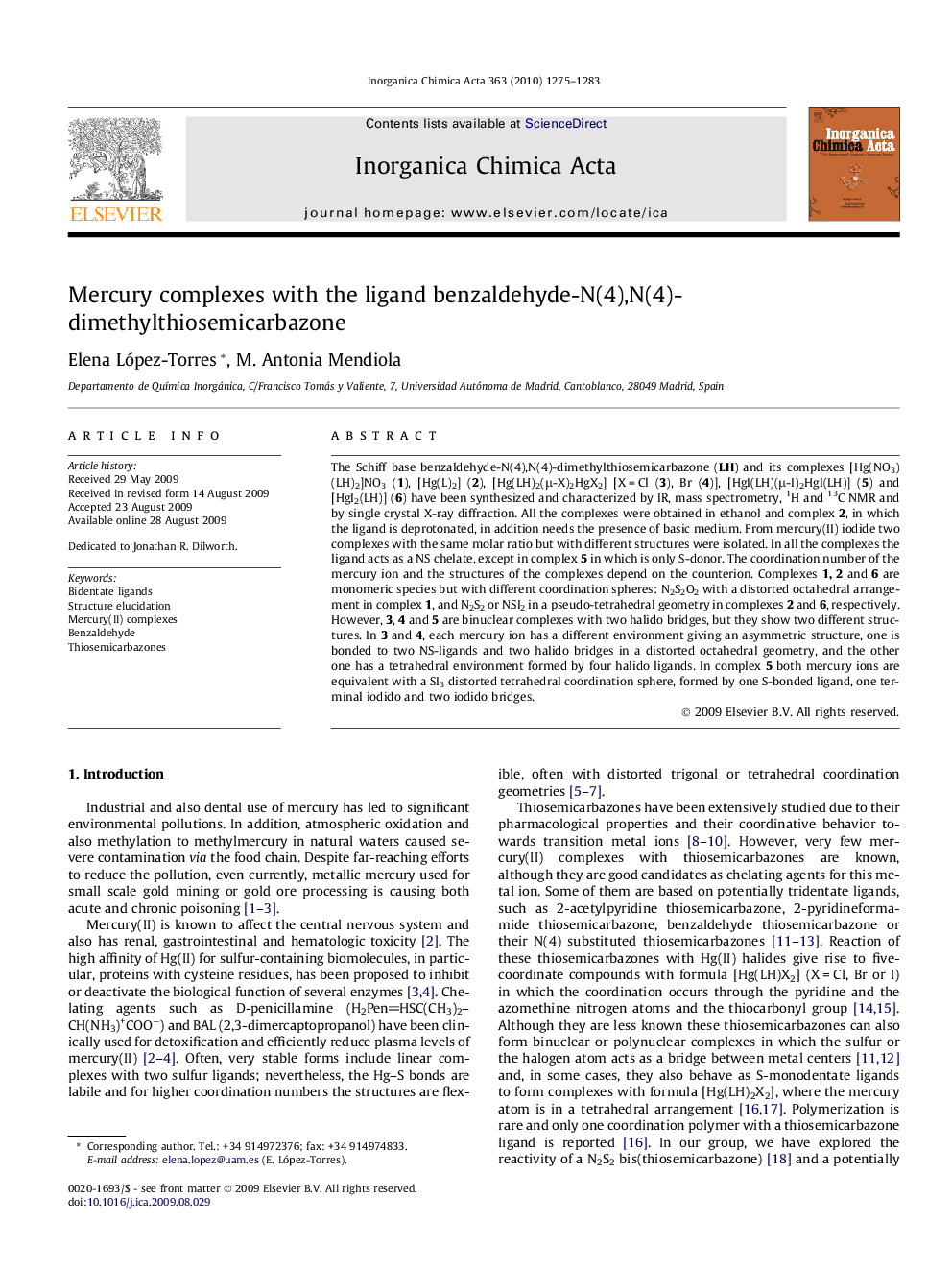| کد مقاله | کد نشریه | سال انتشار | مقاله انگلیسی | نسخه تمام متن |
|---|---|---|---|---|
| 1312623 | 975472 | 2010 | 9 صفحه PDF | دانلود رایگان |

The Schiff base benzaldehyde-N(4),N(4)-dimethylthiosemicarbazone (LH) and its complexes [Hg(NO3)(LH)2]NO3 (1), [Hg(L)2] (2), [Hg(LH)2(μ-X)2HgX2] [X = Cl (3), Br (4)], [HgI(LH)(μ-I)2HgI(LH)] (5) and [HgI2(LH)] (6) have been synthesized and characterized by IR, mass spectrometry, 1H and 13C NMR and by single crystal X-ray diffraction. All the complexes were obtained in ethanol and complex 2, in which the ligand is deprotonated, in addition needs the presence of basic medium. From mercury(II) iodide two complexes with the same molar ratio but with different structures were isolated. In all the complexes the ligand acts as a NS chelate, except in complex 5 in which is only S-donor. The coordination number of the mercury ion and the structures of the complexes depend on the counterion. Complexes 1, 2 and 6 are monomeric species but with different coordination spheres: N2S2O2 with a distorted octahedral arrangement in complex 1, and N2S2 or NSI2 in a pseudo-tetrahedral geometry in complexes 2 and 6, respectively. However, 3, 4 and 5 are binuclear complexes with two halido bridges, but they show two different structures. In 3 and 4, each mercury ion has a different environment giving an asymmetric structure, one is bonded to two NS-ligands and two halido bridges in a distorted octahedral geometry, and the other one has a tetrahedral environment formed by four halido ligands. In complex 5 both mercury ions are equivalent with a SI3 distorted tetrahedral coordination sphere, formed by one S-bonded ligand, one terminal iodido and two iodido bridges.
The synthesis of mercury derivatives with a new thiosemicarbazone ligand is described. The complexes contain the ligand acting as a neutral molecule, unless LiOH·H2O is added. The results point out that the stoichiometry used does not affect the nature of the products, which only depend on the counter ion.Figure optionsDownload as PowerPoint slide
Journal: Inorganica Chimica Acta - Volume 363, Issue 6, 5 April 2010, Pages 1275–1283